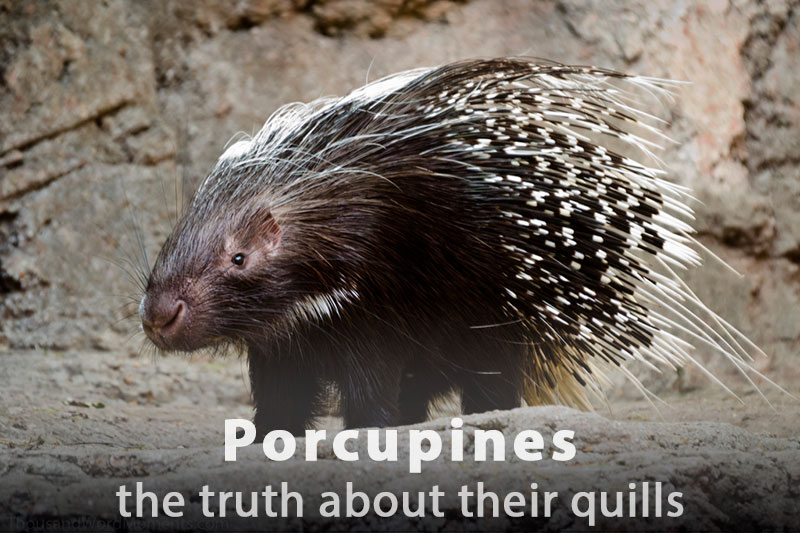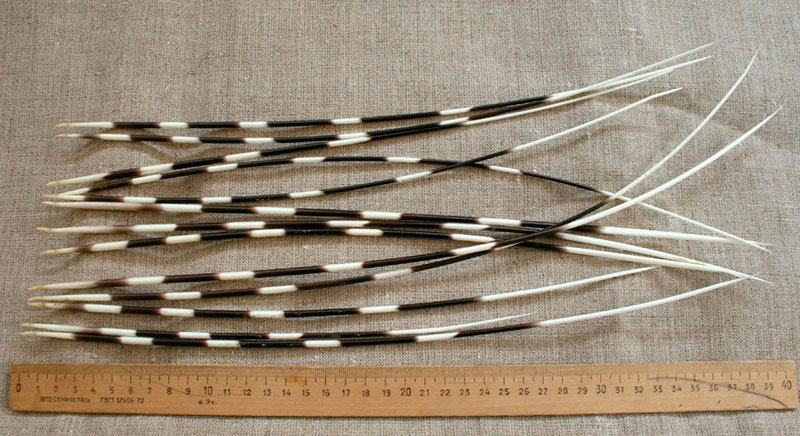A seemingly cute rodent that can be kept as a pet, the porcupine is actually quite a dangerous animal that can beat a lion with its quills. Plenty of fascinating and bizarre myths revolve around it, and quill shooting is the main one. Add the deadly poison, and the porcupine becomes a real killing machine. But is it really so? Let's look at hard and proven data to find out.

No, they can’t. Their quills are poorly fixed in the skin, so they easily remain in the wounds of predators during an attack.
No, these are simple spikes, slightly curved, hollow, or filled with a spongy mass.
Some of the quills have barbs, making them difficult to remove. In addition, spikes are dirt and dust collectors, able to bring infections into the wounds.
Before delving into its quills, let's first look at this unusual animal. They live in some Asian countries, southern Europe, and South America, inhabiting jungles, savannas, prairies, and even deserts.
One of the largest rodents, they are second only to capybaras and beavers. However, only some porcupine species can boast such size. The biggest of them weigh up to 27 kilograms, while the vast majority rarely grow more than 8–12 kilograms. The largest species—the crested porcupine—can grow up to 90 cm long, plus a 10–15 cm tail.
By the way, this species is most suitable for counting quills. It can have as many as 30 thousand quills on its body, or even more.
These cute animals are born with soft spikes, just like hedgehogs. However, the spikes harden over time, making it a reliable means of defense against predators looking for a slow meal. Porcupines become fully developed and independent at two months of age. They are pretty easy to tame—they do not show aggression towards the owner and can be adorable pets.
Another great fact about this rodent is its long life. They can live up to 20 years in captivity and half as long in the wild.
In many movies and cartoons, porcupines shoot their quills at their enemies (and sometimes at their friends). And this, of course, gave rise to this striking and popular myth. But let's not put all the blame on modern screenwriters. In fact, the legend harks back to old times of the ancient Roman era. Also, a porcupine appears on the emblem of Louis XII, who lived back in the 16th century. It depicted the porcupine with a crown on its back, shooting its quills.
However, porcupines just cannot shoot their quills. They are proven to have no special tools in their bodies for this. Also, because quills are hollow and thus too light to hit the target, they are not the best option for shooting. Moreover, they are always curved a bit, making them not so dead-on.
Porcupines have several ways to protect themselves from enemies. Once a predator is around, the porcupine instantly raises its quills, which normally lie flat. Thus, only tough cookies can get close to this prickle ball. Moreover, the animal starts clattering its teeth while its hollow quills are rattling. This is yet another defense against predators, including both cats (lions and leopards) and amphibians (pythons).
 If this doesn't work, the porcupine may then attack. Turning its back or sides, it rushes at the predator, using its tail to hit the enemy's snout or paws. This is where the fun begins. Easily detached, sharp spikes get into the hunter's body. Over time, the porcupine grows new spikes, whereas the predator capitulates with quills protruding from its wounds, so generously given by the "easy meat."
If this doesn't work, the porcupine may then attack. Turning its back or sides, it rushes at the predator, using its tail to hit the enemy's snout or paws. This is where the fun begins. Easily detached, sharp spikes get into the hunter's body. Over time, the porcupine grows new spikes, whereas the predator capitulates with quills protruding from its wounds, so generously given by the "easy meat."
Well aware of this porcupine feature, most animals in their habitat stand aback from these dreadful creatures and attack only as a last resort. For example, when frequent failures in hunting make the animal choose whether to take a chance and grab a porcupine or die of hunger.
However, such a reputation plays a cruel joke on large rodents: they are so used to being safe that they may forget to protect themselves. Even when encountering a car, they do not try to escape but go on the attack. As a result, porcupines die under the wheels.
No, they're definitely not. The porcupine has no glands that would secrete poison, so that's not the point. The danger here is different.
Firstly, it’s all about dirt. Porcupines are small animals that spend much time digging and burrowing. So their skin, wool, and quills naturally get dusty. Therefore, defending against predators may bring dirt into the wounds, causing infection and inflammation.
Secondly, quills are very easy to break. The predator cannot get all of it out, because quills break into pieces that remain in the wounds, hindering healing and making things worse.
This may lead to unexpected consequences. For example, a lion or leopard got its paw hurt, and the pain didn't stop for a very long time; the predator can no longer run and chase swift animals as it used to and is limited to slower ones, starving to death. And this is where people may fall prey to a predator as well. So, the encounter with porcupine quills turns many leopards into man-eaters.
References: Links and sources